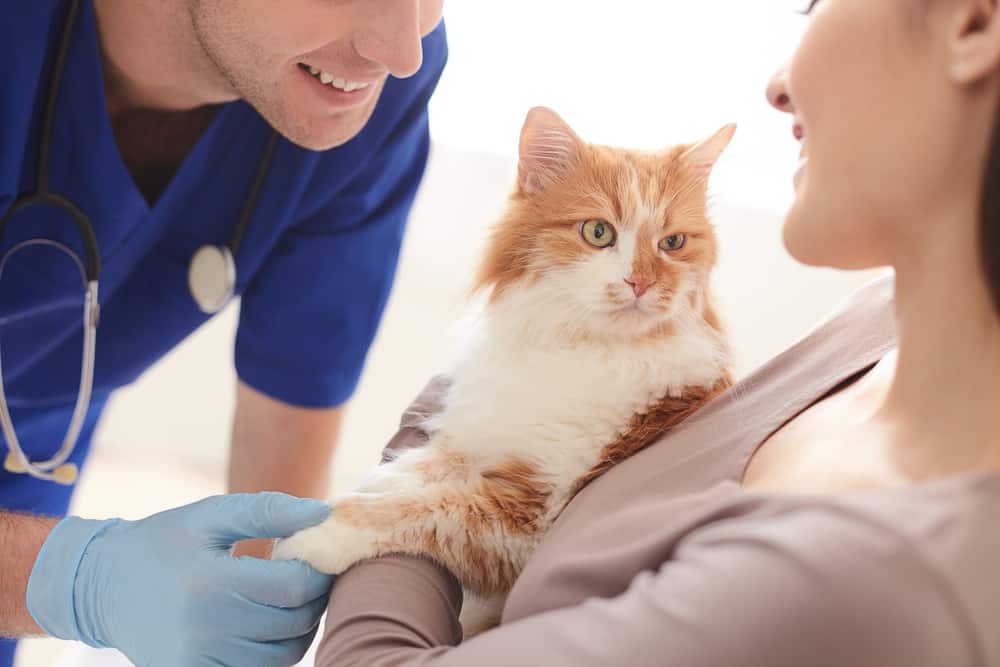How to Tell if Your Cat Has a UTI

Does My Cat Have a UTI?
Being a pet owner is very rewarding but it’s hard work, too. Frequent trips to the vet can be expensive but the longer you wait to diagnose and cure an ailment, the more expensive treatment can become. When humans get urinary tract infections (UTIs), we immediately seek treatment due to how painful they can be. Unfortunately, our furry pals can’t do the same, so it’s up to us to spot the signs.
What Is a UTI?
A urinary tract infection occurs when the feline urinary system gets infected, causing pelvic discomfort. Although this may not sound like the biggest deal, UTIs can cause a lot of damage and should not be taken lightly. A UTI falls under the umbrella of feline lower urinary tract disease (FLUTD).
What Is FLUTD?
Feline lower urinary tract disease is a term used to describe a range of illnesses pertaining to a cat’s bladder or urethra. FLUTDs are much more common than UTIs, although they do share nearly all of the same symptoms. Whereas a UTI requires immediate treatment, FLUTD is much more likely to improve on its own. But even then, FLUTD symptoms can be very uncomfortable, and seeking treatment can positively affect the health and well-being of your cat.
Urinary stones, urinary infections, urethral obstructions, and feline idiopathic cystitis are the most common causes of FLUTD. And, seeing as a urethral obstruction can be detrimental to a cat’s health, it never hurts to give your vet a call.
What Are the Signs and Symptoms of FLUTD?
Unlike humans, cats cannot vocalize their discomfort the second they feel a bladder infection coming on, which is why it’s so important to keep an eye out for the signs and symptoms of FLUTD. Chances are, if your kitty is experiencing one or many of the following symptoms, they are dealing with a UTI or a severe case of FLUTD.
- Your cat is drinking more water than usual
- Your cat is urinating outside of her litter box
- Your kitty’s litter box has gone untouched or contains very little urine
- Your cat is sitting in her litter box, for long bouts of time, with little to show for
- Your kitty’s urine has an unusually foul smell to it
- Your cat seems irritated or more lethargic than usual
- Your cat whimpers or meows in pain when trying to urinate
- Your kitty is compulsively grooming her genital or abdominal areas
- There is blood (or pink spots) in your cat’s urine
- You can feel an apple-sized ball of fluid in your kitty’s abdomen — they cry out when you touch it
Why Did My Cat Get a UTI?
In the animal kingdom, male cats are more likely to contract UTIs than females are, seeing as they have longer and more narrow urethras. There are many reasons why your cat could contract a bladder infection or UTI:
- They’re overweight
- They’re middle-aged (10+)
- They’re neutered
- They’re strictly indoor cats
- They don’t get enough exercise
- They don’t drink enough water
- They strictly eat dry food
- They don’t always have access to a clean litter box
- They live in a household with multiple cats or animals
- They are feeling stressed
Will My Cat’s UTI Go Away on Its Own?
Getting your kitty the treatment she needs can be a time-pressing matter when dealing with UTIs. As time progresses, the bacteria in your cat’s bladder continues to grow and reproduce, causing more and more distress. If left untreated, this infection can spread to your cat’s kidneys which can either result in organ damage or terminal illness. The longer a UTI goes undetected, the more it will cost to revert its damages.
A Trip to the Vet Goes a Long Way
If you suspect that your cat has a urinary tract infection, it’s best to call your vet and schedule an appointment as soon as possible.

How Will the Vet Diagnose My Cat With a UTI?
Veterinarians will conduct a series of tests to determine whether or not your kitty has a UTI. The testing process will go something like this:
A Physical Examination
First, your vet will conduct a physical examination to see if the signs of a UTI are present, such as a small and painful bladder.
A Urine Sample
Next, he/she will collect a urine sample and test its concentration. By examining it through a microscope, your vet will be able to determine if harmful bacteria are present. Your vet may also ask you to collect a urine sample from your cat at home, using non-absorbent litter.
A Urine Culture
Your vet may also seek to identify a UTI using a urine culture. To do this, they place your cat’s urine in a microbiology plate, where they can then grow the urine. Should the offending bacteria be present, they will also grow alongside the urine.
How Will the Vet Treat My Cat for a UTI?
The most common way to treat a feline UTI is with oral antibiotics. Should your kitty test positive for a urinary tract infection, your vet will prescribe them antibiotics which they will be required to take for up to 7 days. However, depending on your cat’s medical chart, your vet may choose to inject them with a dose of antibiotics instead. There are some other methods that are less commonly used:
- Change your cat’s diet
- Increase their water intake
- Urinary acidifiers
- Fluid therapy
- Surgery, if necessary
- Urinary catheter or surgery to remove urethral blockage in male cats
Antibiotics is the main solution, and the solutions above would only be used in very mild or very extreme cases where there are additional issues.
How Long Before My Cat’s UTI Goes Away?
Once on antibiotics, it can take up to a week before your kitty begins showing signs of healing. However, since UTIs can be very persistent, it’s important to bring your cat for a checkup after she has completed her prescription. Your vet will collect another urine sample a few days after your cat has finished taking her antibiotics.
In normal cases, your kitty should be feeling like herself again in under a week. However,
should your cat’s behavior continue to alarm you, this could be a sign that there are other factors at play.
Turns Out My Cat Doesn’t Have a UTI — What Now?
The signs and symptoms of a FLUTD are very widespread, making it easy to believe that your cat has a UTI when in reality, there is something else causing their discomfort. Should your cat’s urine culture come back negative, your vet may recommend taking an x-ray or an ultrasound to identify the root of the problem. Depending on the health and age of your cat, your vet may test for the following diseases:
- Bladder stones or crystals
- A bladder infection
- Internal injury
- Hyperthyroidism
- Diabetes
- Congenital abnormality
- Spinal cord deformities
- Tumors
- Cancer
Helping Kitty Feel Better
My Cat Has a UTI — What Can I Do to Make Her as Comfortable as Possible?
If your cat is recovering from a painful UTI, there is a lot you can do to boost her morale, like giving her extra treats, love, and affection. However, be sure to refrain from petting her stomach area as it may still be sensitive. If possible, don’t pick up your cat as this may apply force to her abdomen. If you live in a household with young children, talk to them about what their cat is experiencing so that they know to be as gentle as possible, too.
Try to make your home a stress-free environment, giving your cat space and time to heal. If you live in a household with numerous animals, set aside a room in your home, preferably one with a window, where your kitty can rest undisrupted. Give her plenty of clean water, and don’t forget to monitor her litter box usage while keeping her litter box as clean as can be.
How Can I Prevent My Cat From Getting Another Bladder Infection?
Unfortunately, there is no magic recipe when it comes to the prevention of FLUTD. However, there are a few ways you can boost your chances of making your cat’s UTI a one-time thing rather than a recurring problem.
When it comes to FLUTD, environmental factors are usually the culprits. And so, promoting a clean urinary tract opening (UTO) is a great way to prevent infections. Here are a few ways you can achieve this:
- Give each cat in your household their proper litter box
- Keep your kitty’s litter box clean
- Regularly wash your cat’s bed and/or blankets
- Give them access to clean water
- Improve their diets
- Feed them a mixture of wet and dry food (to encourage water intake)
- Help them maintain a healthy weight as larger cats cannot properly clean themselves
- Use a wet and clean cloth to wipe down your cat’s UTO if they cannot do so themselves
The Bottom Line

Only once your cat has been diagnosed with a UTI can they receive the treatment they require. If your cat has suddenly begun urinating around your home, despite having a clean litter box, this is a telltale sign that something is wrong. Cats are freakishly clean creatures, after all! We hope your cat feels better soon and gets back to being the adorable furball you know and love.




